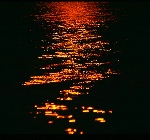Which Film is best?
so, you haven’t got digital yet? OK, there are clear advantages to traditional film!
But, which brand is the best? Actually, there’s no simple answer to this question. Many photo journal regularly publish “objective” tests of new film materials, but in the end it’s up to you to decide:
- a highly sensitive film may help in low-light situations, often, it’s not even necessary to use a flash, and you can take action shots without a tripod
- on the other hand, a “slow” film can be much more saturated and bring out details that you would never capture with a 400 ASA and above film.
Actually, most of the pictures on this site have been taken on Fuji Velvia slide film (50 ASA) a very slow film that is perfect for landscape pictures (in my experience).
- slide film can be much more brilliant and saturated than print film, but
- print film can be more easily shown and is much more forgiving of exposure problems (if you don’t get the settings exactly right, you won’t see any difference on print film, but a slide film may be over- or underexposed beyond repair).
- add to this all the varieties of special infrared, black-and-white, large format and “artificial light” films and you see that the differences can indeed be very great.
Personally, I’d recommend experimenting with a few films at home before you go on that trip of a lifetime: after all, even expensive films are cheap compared to the cost of “repeating” a journey to another continent (if this is possible at all).
Most brand (and even non-brand) films are of a very good quality, - the most important thing being that you know how your material will react.
When you have selected a film that suits your needs, take care to store it properly (preferably in the fridge or mini-bar of your hotel) and beware of the X-ray machines that screen the main luggage on airports.
More on Films:
Film Format
Film Speed

